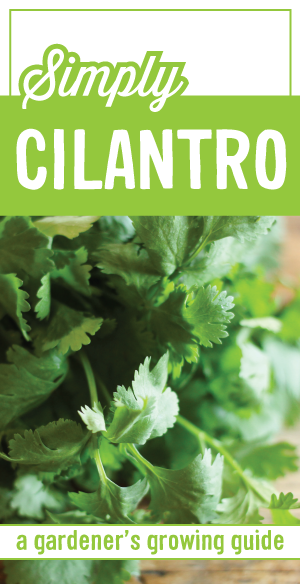
Scientific Name: Coriandrum sativum
Order: Apiales
Family: Apiaceae
Genus: Coriandrum
Plant Type: Herb
USDA Hardiness Zones: Annual (not applicable)
Soil pH Level: 6.1 - 7.5
Soil Texture: Loamy
Sun Exposure: Full to Partial Sun
Appearance Description: Cilantro leaves are bright green and feathery at the top with broadly lobed leaves toward the bottom. They produce very pale pink flowers when fully mature.
How to Plant:
1. Work the soil until it has a smooth and broken-up consistency.
2. Amend native soil with compost, manure, or any other material.
3. Space each plant 2-6 inches apart and each row over 1-foot apart.
4. Water generously after planting.
How to Maintain:
1. Water plant regularly; 1-inch per week is sufficient.
2. Keep soil consistently moist, it should never dry out completely.
3. Watering should be done evenly.
4. An all-purpose fertilizer can be applied as needed.
5. Mulch around plants to prevent weeds.
How to Harvest:
1. Harvest while the plant is still low. Once it starts to drop seeds, cut it down.
2. To remove, cut leaves from the outer plant areas as needed. Smaller leaves can be cut 2-inches above the crown of the plant.
Storage Tips:
Cilantro can be stored by drying and freezing.
Top Varieties:
1. Costa Rica
2. Leisure
3. Long Standing
Fun Facts:
1. Cilantro is known as "Chinese Parsley" or "Coriander."
2. Remnants of coriander (cilantro) seeds were recovered from the tomb of Tutankhamen.
3. Coriander (cilantro) was one of the first spices cultivated by early settlers when it was brought to North America in 1670.
Related Soil:
Schultz Moisture Plus Potting Mix
Related Plant Food:
Schultz All Purpose Water Soluble
Schultz Flower & Vegetable Extended Feed
Schultz All Purpose Extended Feed
Schultz Granular Tomato & Vegetable Plant Food
Schultz Granular All Purpose Plant Food






